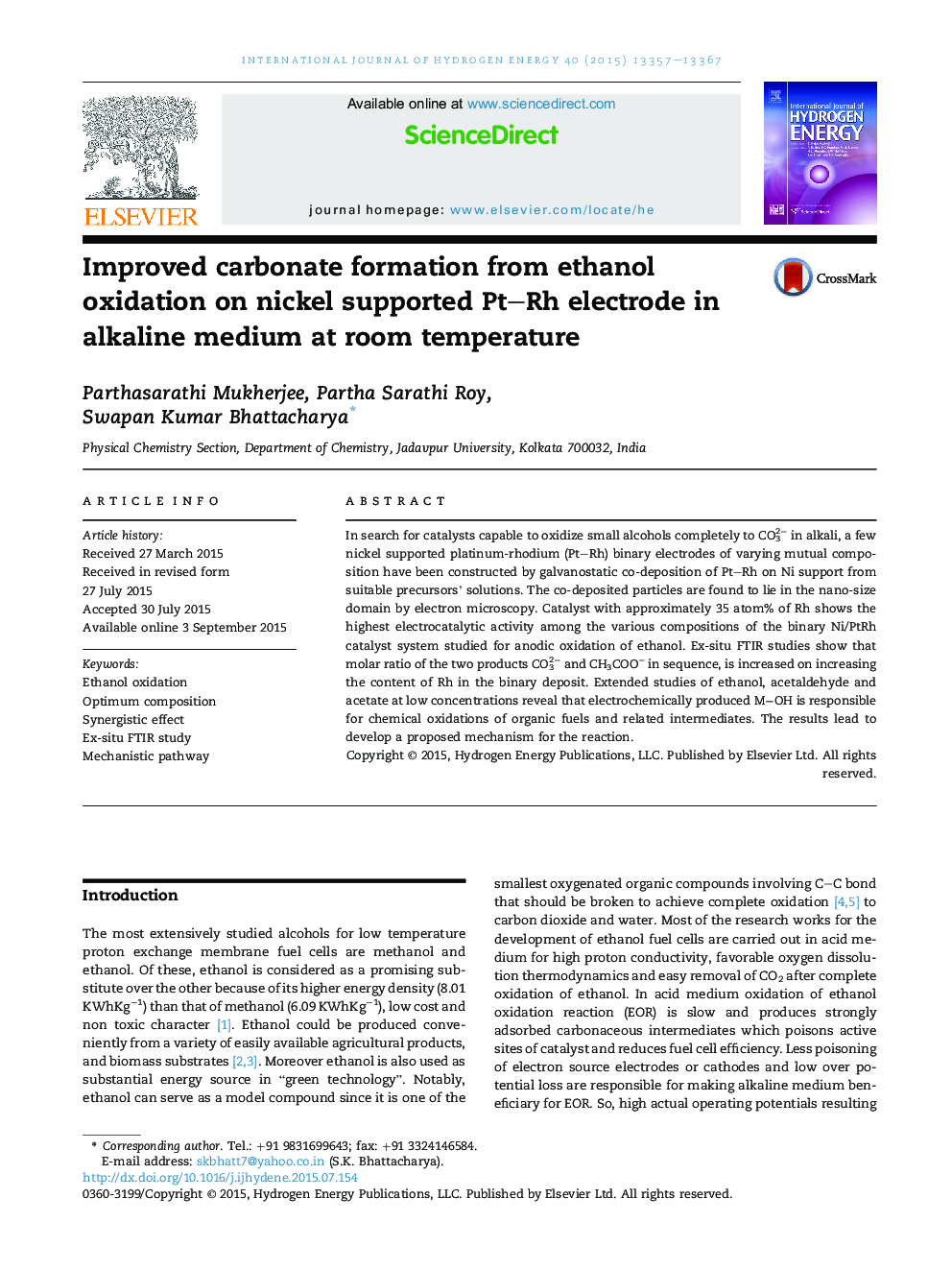| Article ID | Journal | Published Year | Pages | File Type |
|---|---|---|---|---|
| 1274629 | International Journal of Hydrogen Energy | 2015 | 11 Pages |
•Increased C–C bond breaking ability of PtRh electrocatalyst•Ca.35 atom% of Rh shows best electrocatalytic activity for ethanol oxidation.•Ethanol is oxidized to carbonate through acetaldehyde and acetate intermediates.•Proposed path of ethanol oxidation.
In search for catalysts capable to oxidize small alcohols completely to CO32− in alkali, a few nickel supported platinum-rhodium (Pt–Rh) binary electrodes of varying mutual composition have been constructed by galvanostatic co-deposition of Pt–Rh on Ni support from suitable precursors’ solutions. The co-deposited particles are found to lie in the nano-size domain by electron microscopy. Catalyst with approximately 35 atom% of Rh shows the highest electrocatalytic activity among the various compositions of the binary Ni/PtRh catalyst system studied for anodic oxidation of ethanol. Ex-situ FTIR studies show that molar ratio of the two products CO32− and CH3COO− in sequence, is increased on increasing the content of Rh in the binary deposit. Extended studies of ethanol, acetaldehyde and acetate at low concentrations reveal that electrochemically produced M−OH is responsible for chemical oxidations of organic fuels and related intermediates. The results lead to develop a proposed mechanism for the reaction.
Graphical abstractFigure optionsDownload full-size imageDownload as PowerPoint slide
